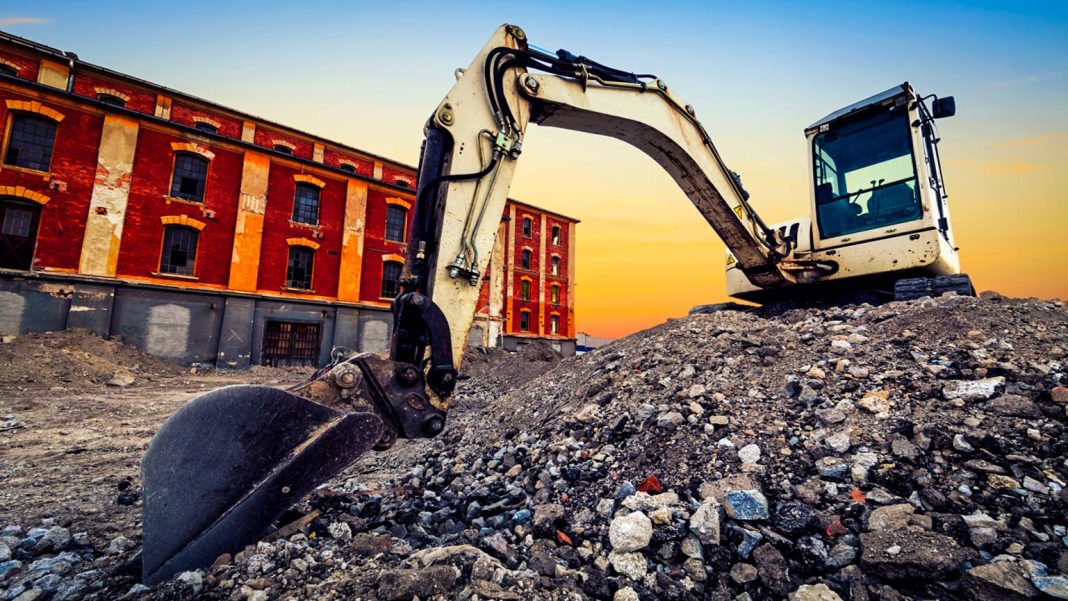Is there a market for recycled concrete? This was such a sizeable question that the EU part-funded a multi-million-Euro project to find out. Leading SeRaMCo, Christian Glock set out to ascertain how construction and demolition waste can be put to good use. We caught up with him to talk about innovating with discarded building materials and whether this aligns with our existing attitudes on construction. Spoiler alert: it doesn’t!
In Europe, a third of all material waste originates from construction. Whereas at least 70% of construction and demolition waste (CDW) is reused, only 4% goes towards erecting new properties. SeRaMCo was initiated to discover if this could change. A project of the European Commission’s Interreg North-West Europe Programme, it was led by Doctor of Engineering, Professor Christian Glock. We were fortunate enough to speak with him to gain first-hand insights around establishing a recover, recycle, and rebuild market.
Let’s Spell It Out
SeRaMCo is a portmanteau word. Read it in full and you’re well on the way to understanding what the project was about: Secondary Raw Materials for Concrete Precast Products. We’re talking about making a recycled building substance from unwanted construction and demolition waste.
Active between 2017 and 2021, the investigation brought together partners from Germany, Belgium, France, Luxembourg, and the Netherlands. Christian stumbled into the lead position much by chance, being handed the baton by his predecessor at the German institution Technische Universität Kaiserslautern. Before that, he was managing director of the German company Bilfinger Hochbau GmbH. His move back to academia “was emotional driven”. As a father of two children active in Fridays for Future, Christian knew he could use his expertise to help safeguard the planet. And it could be done without compromising the quality of builds.
Setting the Concrete Scene
Whereas in the US wood is more prevalent as a building substance, concrete is the mainstay in European cities. This is partially because there isn’t enough timber, our expert points out. We as a species have a habit of knocking down properties and rebuilding. It’s often quicker, cheaper, and easier than retrofitting inefficient properties. That has implications. We’re waist-deep in waste and generate a tonne of CO2 for every tonne of concrete made.
“I’ve seen many problems in the construction industry which are due to working methodologies.”
Clearly, recycling old concrete waste would be beneficial. Technically, we already are. Mainly “under roads,” Christian tells us. But this is poor grade material made from good – it’s downcycling. SeRaMCo was tasked with changing established practices by:
- Exploring how to transform high-grade CDW material back into quality concrete and cement, thereby creating a circular system.
- Using this reclaimed material to manufacture prefabricated panels for modular housing.
- Identifying European economic and job markets for these precast products.
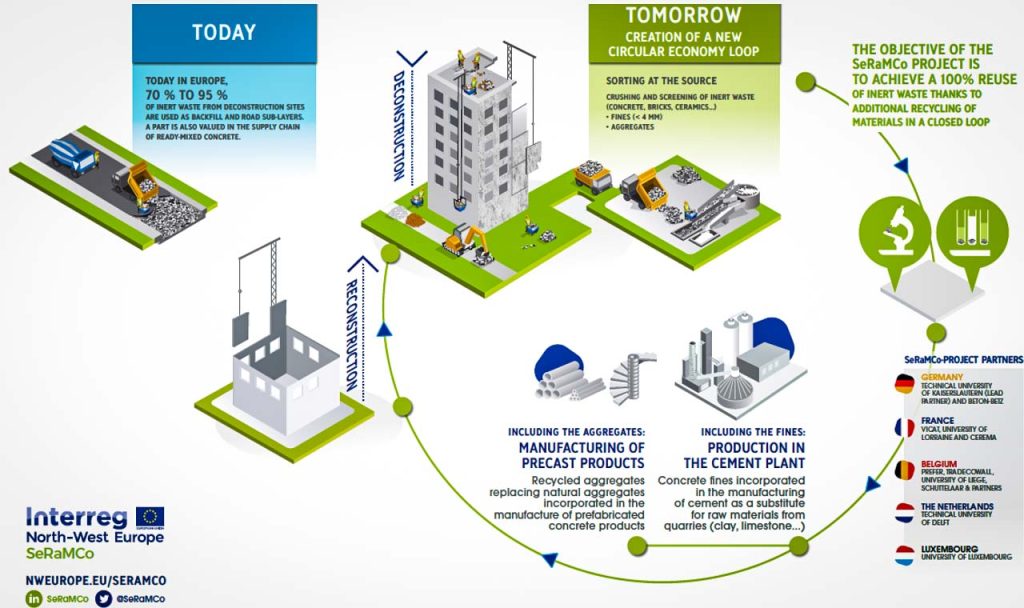
Why prefabricated? “We have so many different stakeholders,” our CityChanger reflects, that “if we have prefab, it’s a bit more structured. And we have a better consistency of material” compared to conventional construction.
Concrete’s First Crush
The project sourced sorted CDW from bridges – concrete only – and mixed CDW from former building stock: concrete, brick, tiles, and ceramics. “We wanted to have solutions for both.” This knowledge would maximise potential. There were some interesting findings.
Sort It Out!
Two partners, the research institute Université de Liège and Tradecowall company in Belgium, optimised the treatment process. They found that the better the material is sorted and washed, the better quality it becomes for onward use. This uses more energy and water, and so is more costly in terms of time and resources, but we are better able to separate materials for specific purposes. This includes ‘floating’ light waste, such as paper and plastic, in waste water to ensure a purity of the final aggregate that is used.
What a Fine Mess!
After sorting and washing, the international team was left with two types of material: grain waste and fine waste.
Grain waste particles are larger. These are mixed with aggregates to create concrete. Fine waste is as it sounds – extremely refined and Christian notes, “very innovative”.
“We use the fine waste with a partner for cement production: with support from Universität Lorraine, Vicat from Créchy in France insert it in cement production.” It reduces the need for virgin natural materials such as sand, clay, and limestone by between 5 and 15 percent. The resultant clinker is of equal quality as traditional cement and the pilot was able to use 100% of the grain in subsequent construction.
Building Blocks of Europe
Christian reflects that SeRaMCo provided an opportunity to break away from conventional standards and create a new way of working. “We don’t want to build a 500-metre concrete bridge with recycling concrete; why am I putting energy into this?” There’s an alternative (and Christian maintains, easier) way to build, whether it’s houses, bridges, offices, or anything else: by constructing prefabricated components. For example, precast products such as rammed concrete bricks and living (or green) walls. Partners in the Netherlands – particularly architects from University of Delft – Germany and Belgium came up with modular prototypes as a “proof of concept that these function”. Christian bills it as a “nice success”.

Rammed concrete brick. 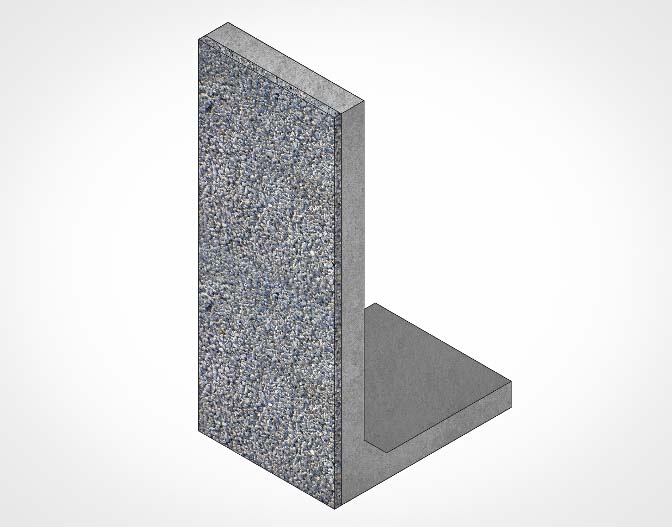
Noise insulating wall component. 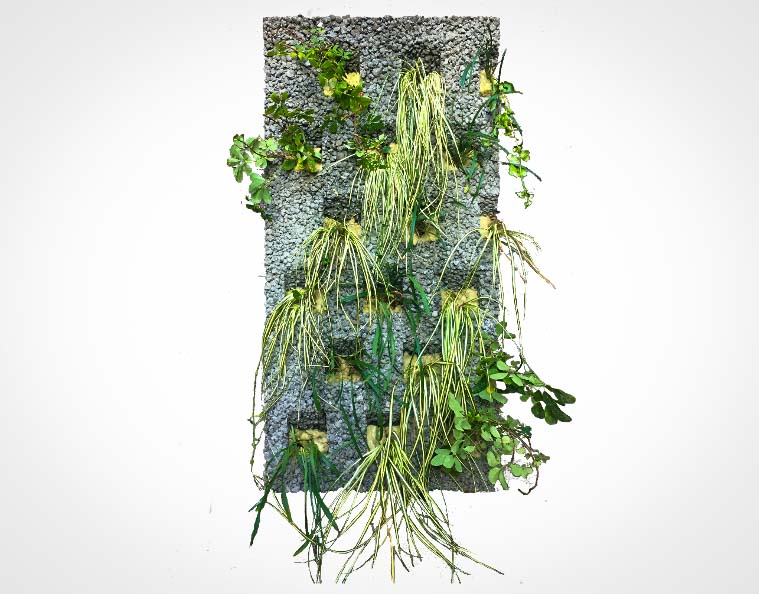
Cladding designed to house greenery.
Due to the COVID pandemic, some pilot projects intended to use these products never materialised. One did. The city of Pirmasens in Germany that had “never built with recycled concrete before,” our expert recalls. They found “no disadvantage” to modular construction, and it has established a culture of using modern methods of construction in local building projects.
This is the type of market realisation that SeRaMCo set out to establish. “That’s why we have touchable projects where the people can look, to see it works,” Christian adds.
Future Concerns
From a technical standpoint, the SeRaMCo team proved recycled CDW is a viable building material. According to the team, concrete precast products (CPPs) look good and they’re energy efficient. The European Commission expects SeRaMCo’s business model “to have increased the use of recycled aggregates in cement and precast concrete products by nearly” 1 million tonnes by 2026.
In the duration of the project, partners weeded out the following flaws and barriers to using recycled masonry.
Rules & Regulations
How can we ensure the practice is scaled up? Your first thought might be to make it mandatory. Turns out “if you make a regulative rule that you have to use X percent, then it might be a problem”.
The factories that create prefabricated units aren’t likely to be local. Transporting the detritus and resultant products from site to site, city to city, and around Europe (as part of larger supply chains) is potentially as polluting as extracting and moving virgin material. Christian highlights that recycled CDW cuts down on waste, sure, but not CO2. Creating clinker is a massive carbon-producing exercise.
We must be honest about this and careful not to let people assume that recycled goods are automatically climate-sound. Otherwise, as Christian points out, we’re in danger of greenwashing. “This is the outcome I wouldn’t have thought of at the beginning of the project.”
Collaboration
European lobbies and unions are strong. They protect whichever stakeholder on the construction chain they represent and strive to minimise change, which is always associated with hassle and cost. That in turn stands in the way of market acceptance.
SeRaMCo discovered that by making “one partner responsible for everything,” rather than leaving each craftsperson to manage their own part of the build, “you get a better view on optimisation”. He means that a project manager overseeing everything can tell the “cement producers, designers, architects, structural designers” and builders what needs to be done to achieve an attractive end result. They’ll coordinate the entire building process, improving efficiency.
A Data Headache
It will, of course, require some catching up before the industry shifts fully from traditional to new production methods. Christian believes economic stimulus – i.e., demand from those willing to pay more for relevant expertise– will cause the skills gap to close quickly.
Data is another story. According to our CityChanger, fifty years ago we built much more efficiently, using only what was required.
Nowadays, so much concrete goes into construction and our calculations aren’t so exact. We throw concrete at a project as a precaution: “an extra safety factor for acoustics, an extra safety factor for fire resistance.” Then we come up with a ballpark stat for how much material we need to ensure structural safety should internal steel reinforcement rods fail.
“If we work more accurately, we can at least reduce another 20% of material.”
By being cleverer with how we build, we can automatically construct in a more efficient way. Standardised modular components guarantee this. If it also means we can cut back on the material we use, nature gains too.
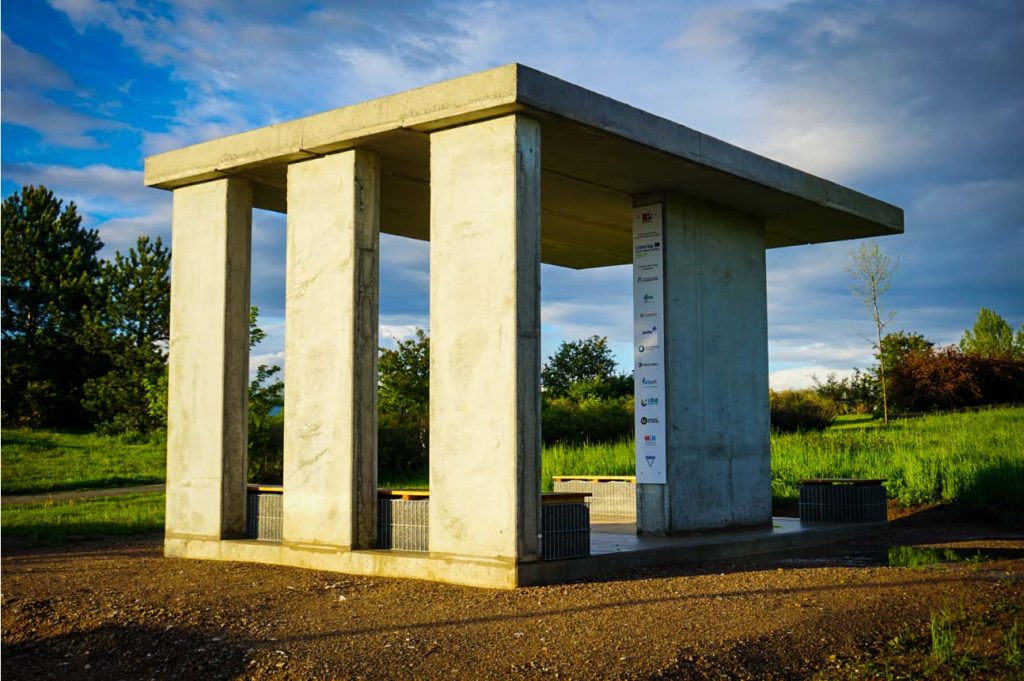
Last Words
SeRaMCo has rooted out a range of issues and solutions in the exploration of recycling concrete. Christian praised the project’s success, although he is haunted by one disappointment.
“What made me a bit unhappy, I would have hoped that from an ecological sustainable purpose, the impact of using recycled material would have been bigger.”
Conducting SeRaMCo was necessary to find out the truth. Even so, there’s nothing he would do differently: “All of our project team is happy with the results.”
Christian summarised the project with some of his most profound findings:
- “We have to use everything as little as possible and connect materials in the best possible ways.”
- “If you crush something in cities and use it again, it’s much better than to not do it.”
- “You can do everything with recycling concrete that you can do with fresh concrete.”
This expert offered one last piece of advice: “I think we need a failure culture; we have to try new stuff even though we know that some of it will not work. We have to tolerate it.” Innovating, prototyping, testing, adjusting, and retrying is how we establish what works well and what works even better. SeRaMCo is proof of that. But for now, it seems, widescale use of CDW is a long-term vision.
Recycling CDW in a Nutshell
How can we make use of construction and demolition waste in the building sector? This knowledge is SeRaMCo’s legacy.
- First, acknowledge why we should: not for its climate-saving properties but because we have plenty available and it’s better to use it than dispose of it.
- Spending the time to establish and fully utilise the processes needed to separate and prepare CDW for quality construction – and finding new ways to build with it, like precast units – it is a worthwhile investment.
- When it comes to creating a market for these products, we must involve all stakeholders in a cooperative formation to ensure that we understand the build, can maximise efficiency, and don’t create regulations that force us to engage in practices that create further environmental problems.
And finally, try, try, and try again until we get it right.
For further information on SeRaMCo, connect with Christian and check out the presentations and booklet from the final conference he has shared with us.

